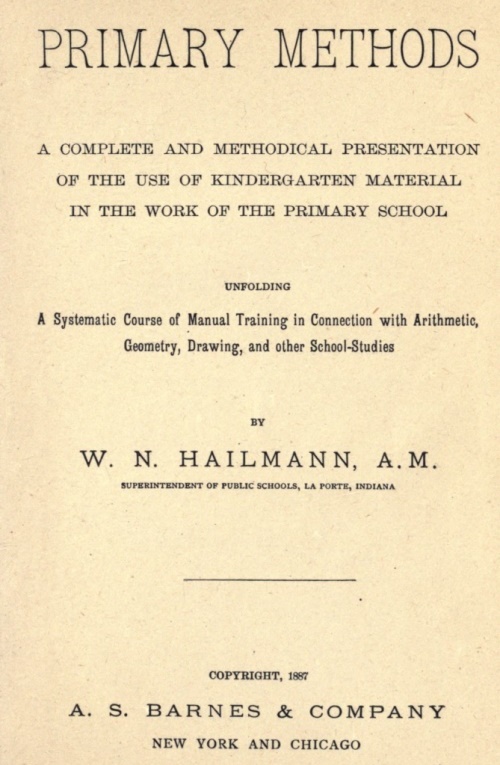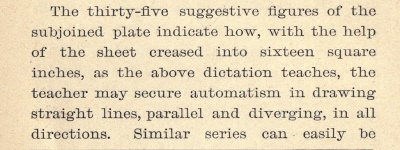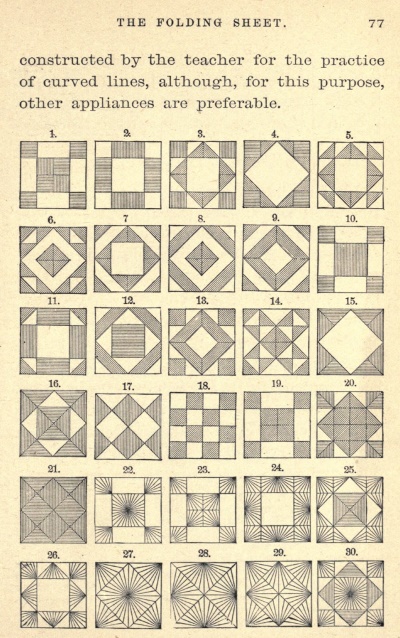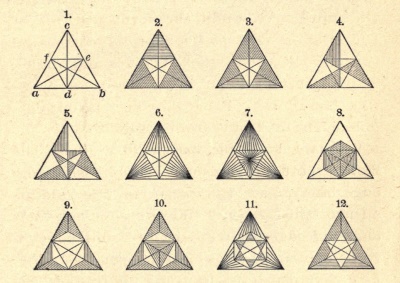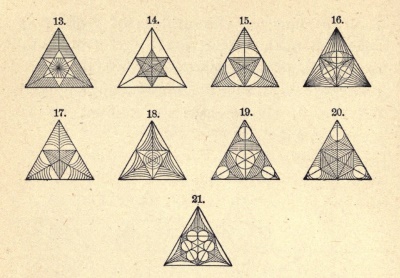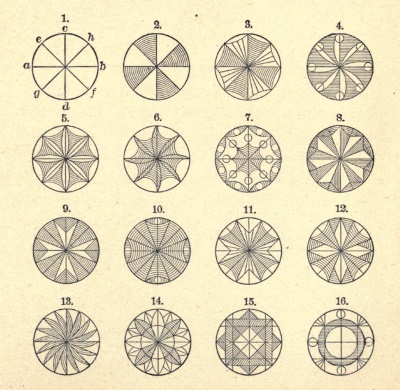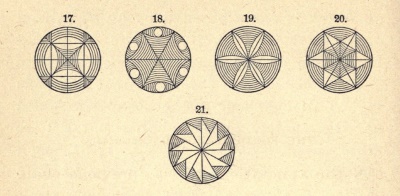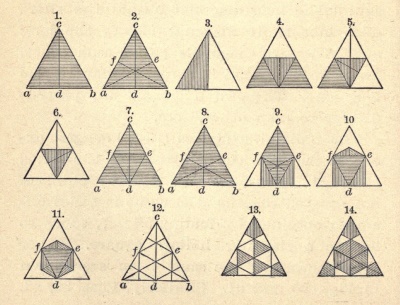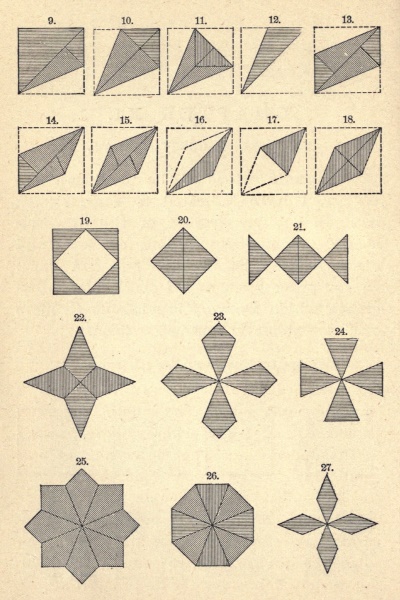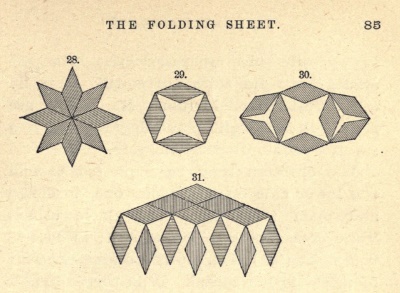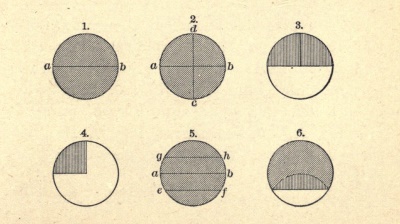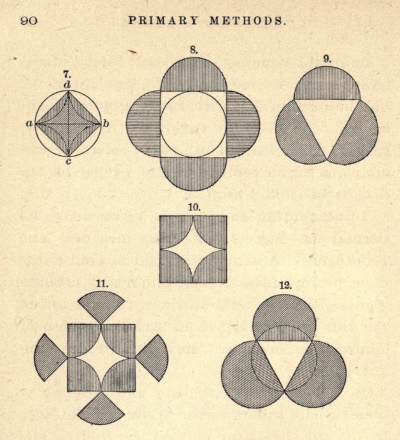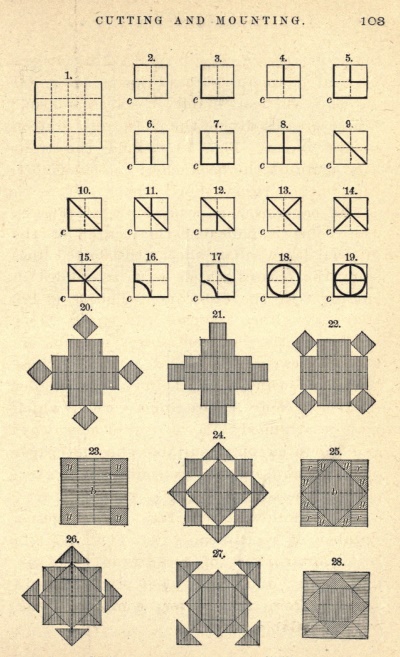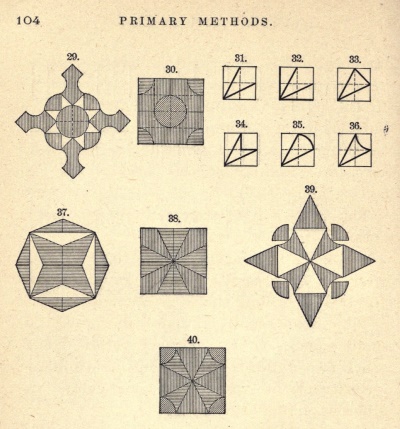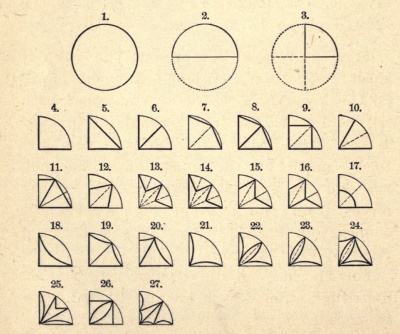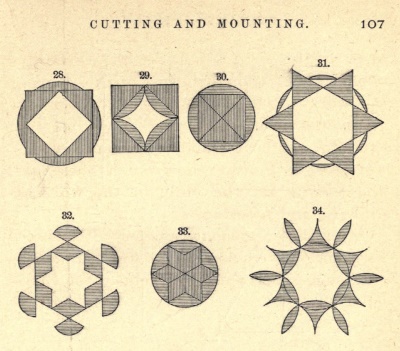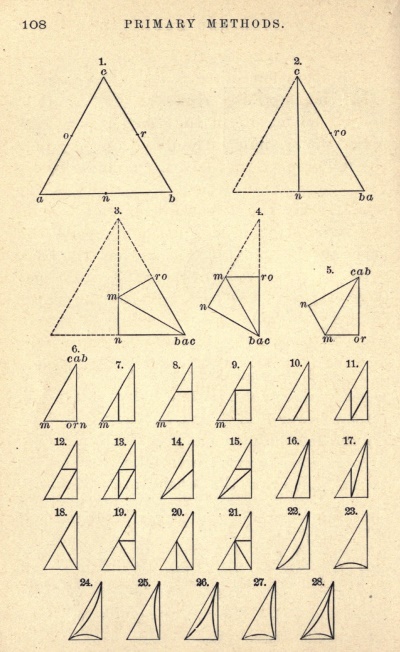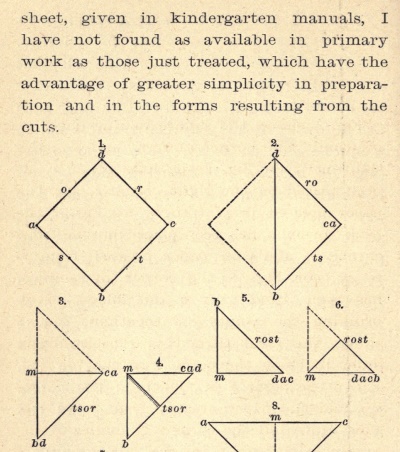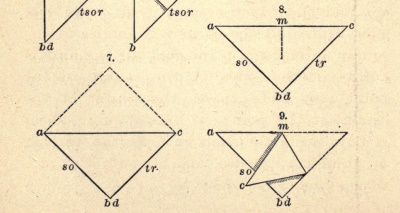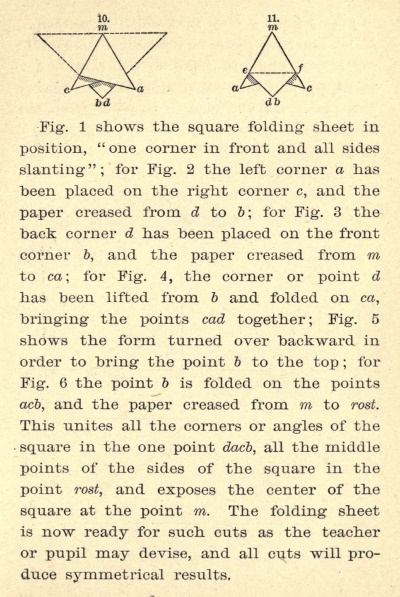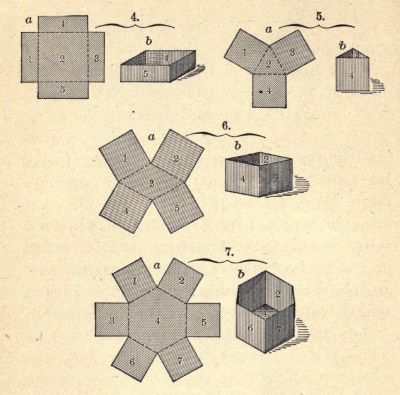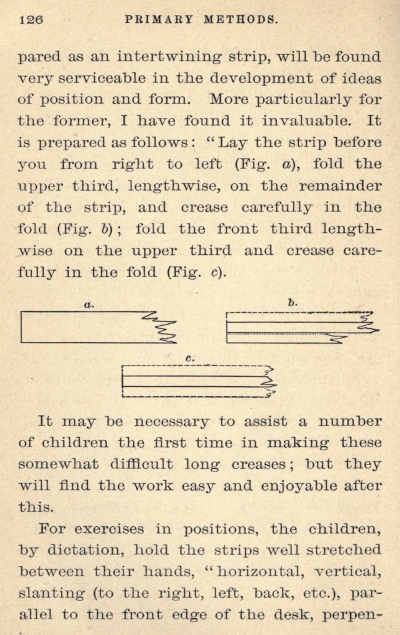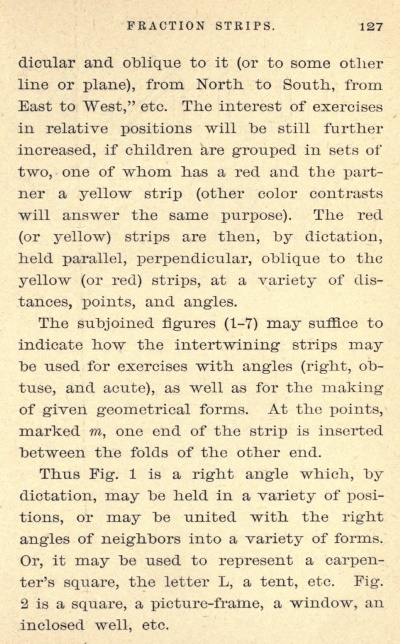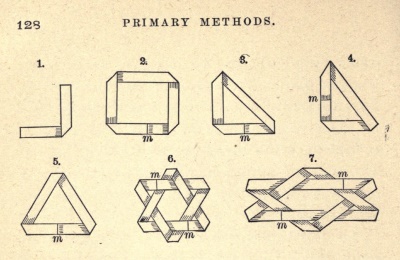| The Public Paperfolding History Project
Last updated 20/12/2023 x |
|||||||
| Primary Methods by W N Hailmann, 1887 | |||||||
| 'Primary
Methods: A Complete and Methodical Presentation of the
Use of Kindergarten Material in the Primary School' by W
N Hailmann was published by A S Barnes and Company in New
York and Chicago in 1887. As the title makes clear, the
material it contains is intended for use in primary
classes rather than in kindergarten. The introductory material is worth reading for its insights into the proper nature of manual work in schools and the difference between Froebel's gifts and occupations. Notably the author states:
A full copy of the work can be accessed here. **********
********** Analysis Pattern Drawing based on Folded Grids Chapter X - The Folding Sheet explains how to fold paper of various shapes to produce grids of creases which can then be used as the basis of pattern drawing exercises. From a square divided into a 16x16 grid
********** From an equilateral triangle divided into a grid of smaller triangles (picture 1)
********** From a circle divided into eight radial segments (picture 1)
********** Chapter 11 shows how to construct a hexagon from an equilateral triangle and how to use the resulting crease pattern as the basis of designs used for colouring-in.
********** Constructing Patterns from Folded Shapes Chapter XI - The Folding Sheet explains how to create 'social syntheses' ie patterns made by combining shapes folded by several children. Using shapes folded from a square
********** Using shapes folded from a circle
********** Ausschneiden und Aufkleben (Cutting Out and Mounting) The beginning of Chapter XIII presents a simplification of the Froebelian occupation of Ausschneiden und Aufkleben in which the shapes are cut from squares and circles folded in half then in half again.
********** The author then explains how to cut more complex designs: From the Equilateral Triangle No illustrations of the results of making these folds and cuts are given.
********** From the Square - using Froebel's original method The author notes:
********** From the Fold and One Cut Hexagon
********** Cardboard Modelling Chapter XIV contains nets for various containers and polyhedra made using the cardboard modelling technique.
********** Verschuren - Intertwining Chapter XV includes information about Verschurn, although this term is not used. Inch wide strips are first folded in thirds lengthwise (presumably to thiun and strengthen them) then folded into intertwined shapes.
********** |
|||||||

